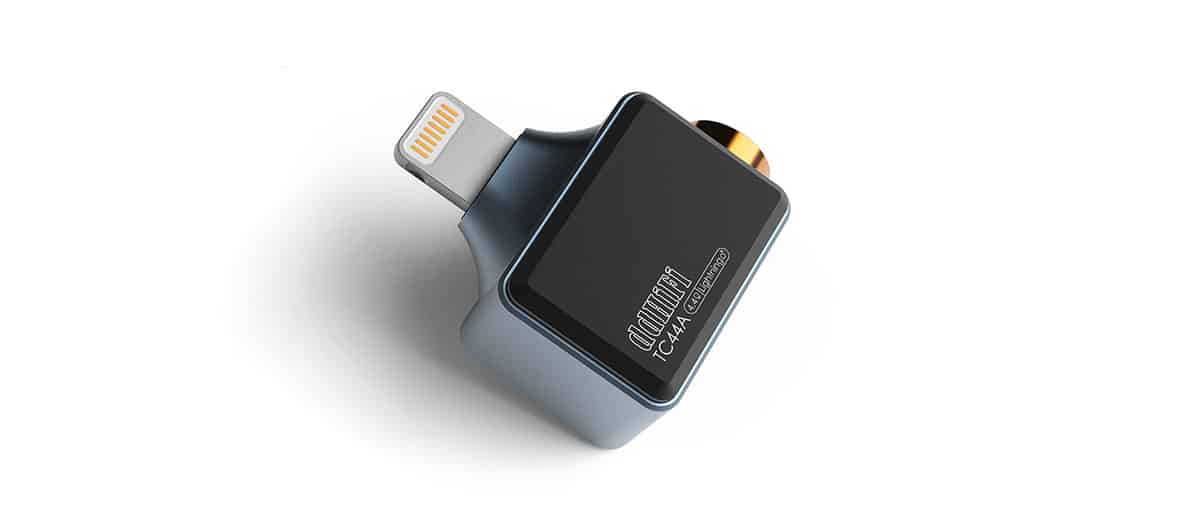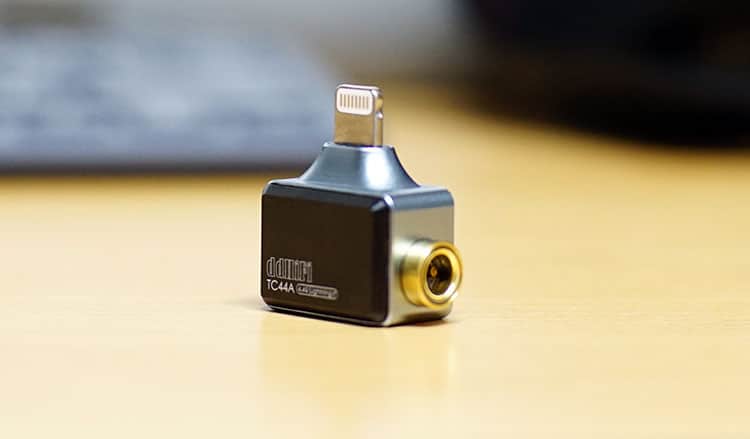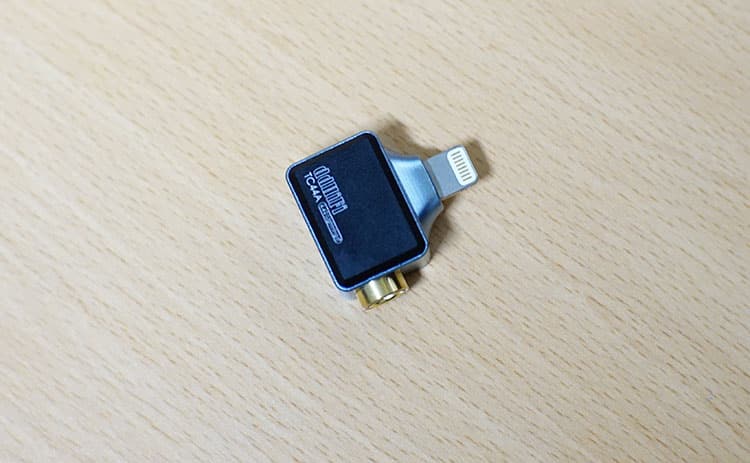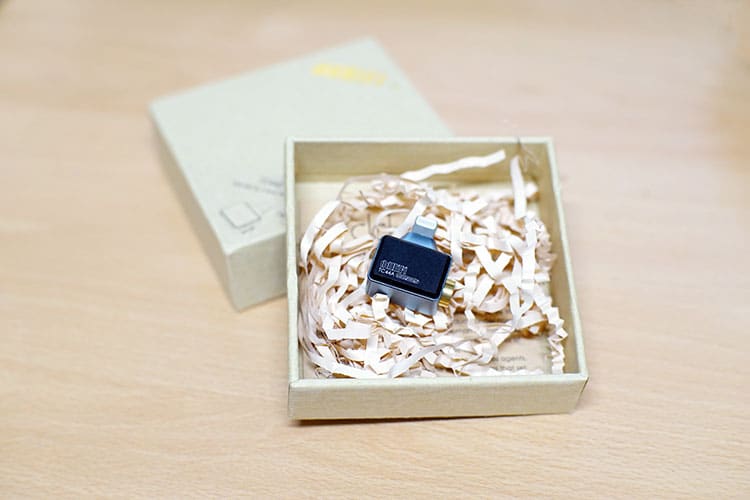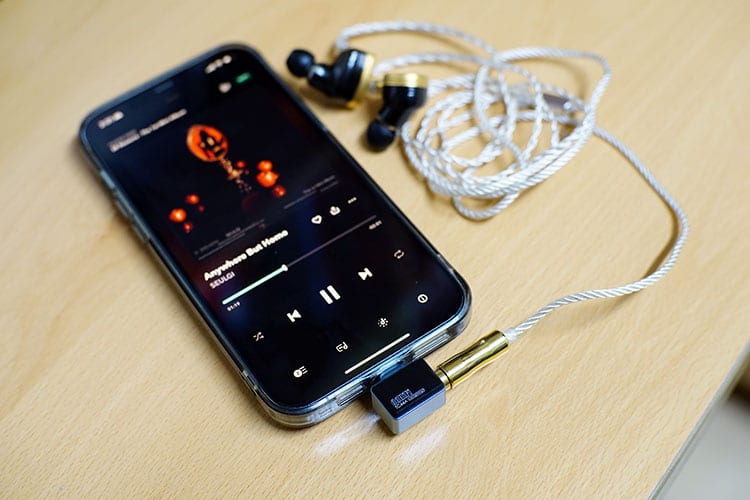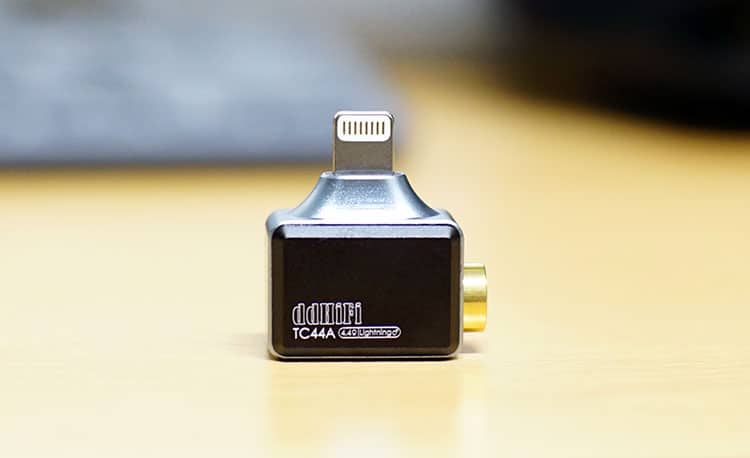Today, we review the ddHiFi TC44A Lightning DAC which is a miniaturized dongle with a 60mW 4.4mm SE output specifically for Apple iPhone users. It is priced at $79.99.
Disclaimer: This is a sample that was sent to us in exchange for our honest opinion. Many thanks to ddHiFi for giving us this opportunity.
You can read about previous ddHiFi products we have previously featured on Headfonics here.
Note, that this article follows our latest scoring guidelines which you can read up on here.
ddHiFi has been making its name in the audio world since 2017. We have seen various products across its line. They have made a variety of dongle DACs including the recently reviewed TC44C, adapters, IEMs such as the Janus2, and cable assemblies.
Honestly, I’ve been eyeing ddHiFi DACs for quite some time now, especially the new models with no cable. I find these compact DACs to be failproof – equipped with either a vertical assembly or a T-shaped assembly, removing the point of failure of a cable between the lightning/USB-C male plug and the headphone jack.
ddHiFi has been producing numerous similar designed DACs with different chips, although only offering them with 3.5mm single-ended outputs.
Their newest offering is the TC44A which is a miniaturized dongle DAC and headphone amplifier specifically for iPhone users and equipped with a 4.4mm single-ended jack. Offered at an affordable price of $79.99, will this be an attractive product for mobile users? Let’s find out!

Tech Highlights
Despite its small size, ddHiFi still manages to pack in a Cirrus Logic CS43131 DAC chip in the internals of this dongle.
The Cirrus Logic CS43131 is a one-chip solution with a 2-channel low-power DAC with a built-in amplifier. Alongside it, it uses low power to operate, only needing a 2-volt DC power source to operate.
The chip also allows the dongle to decode PCM streams up to 32bit/384kHz and DSD256. This means it can fully decode and play music in a lossless format, particularly when using Apple Music on your iPhone.
Because of its new 4.4mm input jack, it makes it easier to use similar IEMs used in DAPs or other systems using 4.4mm directly to mobile devices. It also can easily drive efficient IEMs with its power of 60mW into a 32Ω load.
Design
When you think of ddHiFi, I’m sure you would know its signature blue shade and gold combination. This is still true with the TC44A, it has the ddHiFi signature blue color and gold-plated headphone jack.
The form factor reminds me of Lego blocks that are used to stack with other components. These are very compact, not needing a wire or cable to connect things. Just plug in your IEM then plug it into your mobile device and poof you can already enjoy listening to music.
Aside from the clever design, these are also very durable. The chassis is made out of a CNC Aluminum Alloy Case, which can take a beating even when exposed to daily use. The aluminum chassis also helps to keep the weight down, with its almost negligible weight of 5.5g.
This is a T-shaped OTG plug that enables a durable and stable connection at all times. Elimination of a cable in between makes it easy to use it on the go as no module is seen dangling nor risks disconnection.
I/O
The TC44A is a compact DAC, with a plug-and-play easy solution design in mind. This makes it no surprise that the input and output plugs are very straightforward.
The input port is either lightning or a USB Type-C while the output port is a 4.4mm jack. There is no other control found in the DAC adapter. Unfortunately, the headphone jack neither supports a mic nor supports in-line control, and despite being 4.4mm is single-ended only and not balanced by design.
Packaging & Accessories
The ddHiFi TC44A comes in 2 inputs, lightning, and USB-C options. The one I have here is a lightning version, which can be seen ticked in the outside packaging.
The packaging of the ddHiFi is pretty minimal. The adapter is enclosed in a small brown cardboard box. It feels eco-friendly, as it is very minimal and uncolored.
Brown paper confetti was also used to protect the item inside. Aside from the unit itself, there is nothing to be seen aside from the warranty card. Overall, despite the minimal packaging, it was enough to ensure the safety and durability of the dongle during transport and storage.
Sound Impressions
Summary
The TC44A has a neutral and natural sound signature. It is well extended in both low and highs, with a generally flat presentation and frequency range. The lower end lacks heft, although it is not necessarily a deal breaker.
The midrange is on the forefront, presented with a clean and spacious soundstage. Vocals and instruments are thick and present, taking center stage as the highlight of this DAC adapter.
The treble is not particularly rolled off, but it does take a step back relative to its more forward midrange response.
Timbre
Even with sensitive IEMs, the TC44A is clean and quiet sounding overall. In particular, it does shine in the midrange region. It has an added richness in the mids, highlighting instruments and vocal projections.
Male and female vocals are neutral with a slight hint of warmness. Female vocals have an inviting effect, displaying exceptional richness, especially with husky and whisper vocal techniques.
Acoustic instruments, especially guitars, are lush. Strums have weight and do not get drowned out. I did notice the highs to be a little dull, lacking the crisp strums that were expected on certain tracks.
Cymbal hits lack shimmer and weight. Especially with busy tracks, it tends to blend into the background with a dull and thin splash. However, it does complement the overall presentation.
Staging & Dynamics
The soundstage is impressively wide. Despite its small form factor, there is a lot to unpack here. Image placement is also fairly accurate, allowing for different instruments and vocals to create true-to-life placements.
Synergy
Power
Not surprising but the TC44A is on the low power side. It’s designed to be an on-the-go setup, so ideally, an efficient IEM is likely to offer the best or most logical pairing.
I don’t usually carry power-hungry IEMs so I was able to get away with a decent performance from the TC44A. Even with no music on, sensitive IEMs like the Campfire Audio Solaris are pitch black, with no unwanted hissing or static sounds.
Other IEMs with 30Ω or less were also powered with ease with the ddHiFi TC44A, like the 7Hz Eternal.
Pairings
Given this is not a high-powered DAC, I would stick to low-impedance headphones and IEMs. The TC44A is pretty easy to pair, thanks to its generally flat response. It does add richness to the midrange, which will be good to push for more midrange performance.
To start, pairing it with the 7Hz Eternal enhanced Eternal’s midrange region, gives both clarity and soundstage to the monitor. It was easily powered, with plenty to spare.
Moving over to the CA Solaris, which is a sensitive monitor. I was impressed by how silent this pairing was. Other dongles showed some hiss when there was no music turned on. With the Solaris, I was already comfortable with 1 notch of volume levels. This shows the TC44A easily drives most IEMs.
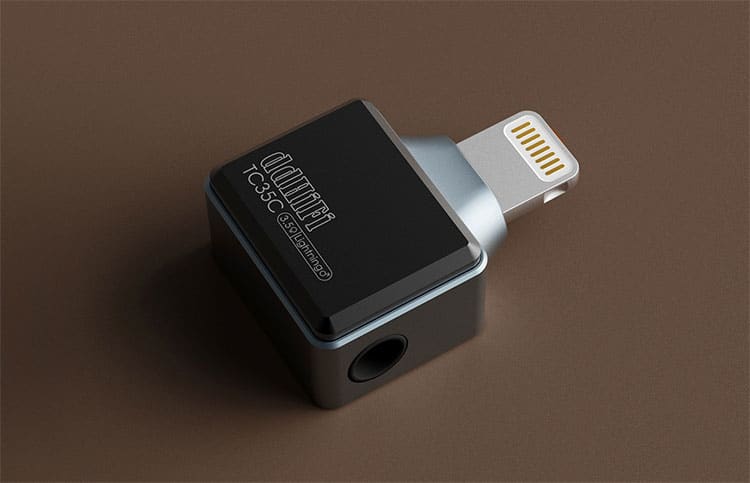
Select Comparisons
ddHiFi TC35C
$59.99
Technical
The TC35C is also a DAC adapter offered by ddHiFi. Although similar in form factor, these dongles are two very different things in terms of user experience and internals.
TC44A has a Cirrus CS43131 DAC chip while the TC35C has a Realtek ALC55686 DAC chip. The different DAC chip allows for different capabilities. Although both support up to 32-bit 384kHz PCM decoding, only the TC44A has to support up to DSD256
Another difference is its output. The TC35C has a 3.5mm single-ended and not a 4.4mm single-ended version. The TC35C allows in-line remote controls such as playing and changing tracks while the TC44A does not.
They also differ in their power capabilities. The TC44A can supply 60mW of power at 32Ω while only 30mW at 32Ω can be supplied by the TC35C.
Design
The design of the two is pretty similar. The TC35C looks like a smaller version of the TC44A, having the same color and configuration.
Both dongle DACs are made from CNC aluminum alloy cases, considering durability. It would be easy to imagine both taking a beating with everyday use. They also share the same configuration with a T-shaped OTG plug. The lack of cable makes both of them feel more compact and easier to carry around.
Both are very lightweight but the TC35C is lighter. However, in this case, weight almost doesn’t matter when comparing 5g with 3g, these are negligible.
Performance
Despite looking very similar, these 2 are very different in sound. Perhaps because of the different chipsets found inside.
Overall, the TC35C sounds soft-mannered in comparison to the TC44A which has far superior dynamics. The TC44A attacks are punchier and livelier and that holds across the frequency range. The TC35C sounds mellow and slow at times, nothing exciting sounding at all.
The midrange is also lusher sounding in the TC44A. Aside from its more forward vocal range, there is an additional sweetness in how it displays its midrange, captivating even. When it comes to the separation between vocals and instruments, the TC44A is more capable of expressing the gaps between them.
The imaging is also more accurate. The TC35C did have some difficulties in multi-layer vocals wherein it clumps certain layers together. The difference is heard in the TC44A, with enough gap between layers.
Although, both give a clean frequency range. Even with sensitive IEMs, both DAC adapters did not have any hiss or noise when no music is played.
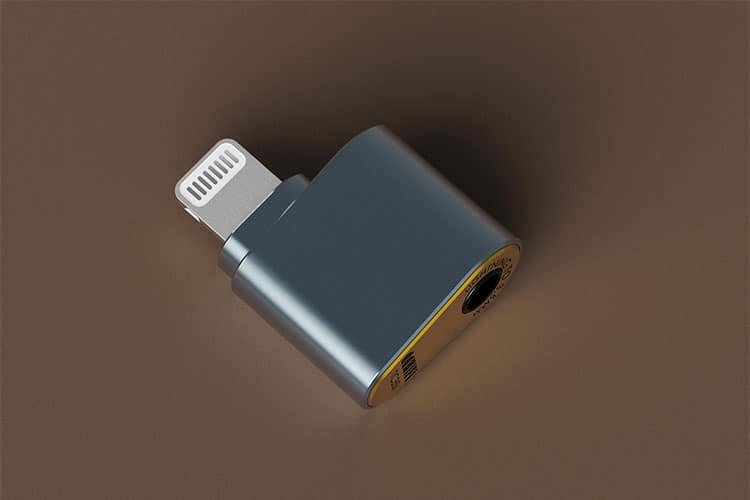
ddHiFi TC35i (2022)
$49
Technical
The TC35i is an offering from ddHiFi with the Apple C101 DAC chip, similar to the ones in the stock Apple Dongle. The TC44A on the other hand has a Cirrus Logic CS43131 chip.
The difference in chips offers different capabilities. The TC35i only has a PCM Decoding Capability of 24bit/48Hz while the TC44A has a 32bit/384kHz PCM decoding capability, along with DSD support native up to 256.
The headphone output mode on the TC35i is 3.5mm Single-Ended and not 4.4mm SE. Although the difference in output does not necessarily differ in power, in this case, it does. The TC35i only offers 16mW at 30Ω loads while the TC44A offers 60mW at 32Ω loads.
Although, the TC35i offers mic and control support. It can be used to answer phone calls, launch voice assistance, and use in line with voice messages and video. Unfortunately, the TC44A does not offer these capabilities.
Design
These two have similar color schemes, although different in shape. Not surprising since the same company makes it. The TC44A is square-shaped, with boxy corners while the T35i has an irregular shape with smoothened corners.
Both are also made from CNC aluminum alloy cases, making them lightweight and durable simultaneously. These are tough to break, even when using them on the go.
When it comes to its plug configurations, the TC35i offers a vertical socket, mimicking the forgotten headphone jack while the TC44A offers a T-shaped OTG plug. This is down to personal preference, as both have pros and cons in their configurations.
Performance
Again, these two dongle adapters are very different in performance. TC44A has a superior performance compared to the TC35i. Everything TC35i does, the TC44A does better.
Starting from the overall response, the TC44A gives off a smoother and cleaner overall sound. Longer periods reveal more of a finer and more pleasant response.
Listening to the drums and bass guitar also offers better dynamics, allowing the driver to have a punchier attack. The TC35i feels sluggish, too polite to have liveliness in them.
Between the two, TC44A does have a more forward vocal range and an airier treble, allowing female vocals to have a velvety quality. It does a better job of expressing a natural and accurate midrange region.
Both the imaging and soundstage are also better with the TC44A. The soundstage is more expansive which allows having a better cohesive presentation. Between the two, the TC35i has more compressed imaging. At times, busy tracks become tough to handle with the TC35i while the TC44A handles it with ease.
What both dongles do well are their clean frequency range and low-noise floor. Even with sensitive IEMs, both did not have any hiss or noise when no music is played.
Our Verdict
ddHiFi has won the hearts of many thanks to its sleek and convenient design. The TC44A is no exception to this, as it’s designed to be user-friendly and there’s nothing to hate about it.
The device itself is simple, it’s a plug-and-play device. No need for any setup and complicated controls on the surface, nor batteries to charge. Everything can be controlled and powered by a mobile device.
This may not be the best of the best dongle out there but it certainly does its job. I carry one around just in case I forget my DAP, tucked into my IEM pouch as its footprint is small and essentially weightless.
This is best for people who have a 4.4mm system in their chain and would like the convenience of not changing cables to listen with their smartphone. With the price tag of $79, it’s a good smartphone experience upgrade, with an added convenience for 4.4mm cable users.
ddHiFi TC44A Technical Specifications
- Plug – OTC Lightning Plug
- DAC Chip – CS43131
- PCM Decoding Capability – 32bit/384kHz
- Frequency Response – 20Hz-20kHz
- DSD – supports up to Native 256
- Output Power – 60mW dual channels (32W)
- Dynamic range – >120dB
- THD+N – <-110dB
- SNR – >120dB
- Weight – 5g
- Dimension (excl. The plug) – 5*21*12mm

